122
19
Write the shortest code you can that produces an infinite output.
That's all. You code will only be disqualified if it stops producing output at some point. As always in code golf, the shortest code wins.
Here's a list of answers that I think are really clever, so they can get credit:
- The comma is both code and data
- Infinite errors (that counts)
- Infinite warnings (that also counts)
- What's Marbelous?
Leaderboard
var QUESTION_ID=13152,OVERRIDE_USER=8611;function answersUrl(e){return"https://api.stackexchange.com/2.2/questions/"+QUESTION_ID+"/answers?page="+e+"&pagesize=100&order=desc&sort=creation&site=codegolf&filter="+ANSWER_FILTER}function commentUrl(e,s){return"https://api.stackexchange.com/2.2/answers/"+s.join(";")+"/comments?page="+e+"&pagesize=100&order=desc&sort=creation&site=codegolf&filter="+COMMENT_FILTER}function getAnswers(){jQuery.ajax({url:answersUrl(answer_page++),method:"get",dataType:"jsonp",crossDomain:!0,success:function(e){answers.push.apply(answers,e.items),answers_hash=[],answer_ids=[],e.items.forEach(function(e){e.comments=[];var s=+e.share_link.match(/\d+/);answer_ids.push(s),answers_hash[s]=e}),e.has_more||(more_answers=!1),comment_page=1,getComments()}})}function getComments(){jQuery.ajax({url:commentUrl(comment_page++,answer_ids),method:"get",dataType:"jsonp",crossDomain:!0,success:function(e){e.items.forEach(function(e){e.owner.user_id===OVERRIDE_USER&&answers_hash[e.post_id].comments.push(e)}),e.has_more?getComments():more_answers?getAnswers():process()}})}function getAuthorName(e){return e.owner.display_name}function process(){var e=[];answers.forEach(function(s){var r=s.body;s.comments.forEach(function(e){OVERRIDE_REG.test(e.body)&&(r="<h1>"+e.body.replace(OVERRIDE_REG,"")+"</h1>")});var a=r.match(SCORE_REG);a&&e.push({user:getAuthorName(s),size:+a[2],language:a[1],link:s.share_link})}),e.sort(function(e,s){var r=e.size,a=s.size;return r-a});var s={},r=1,a=null,n=1;e.forEach(function(e){e.size!=a&&(n=r),a=e.size,++r;var t=jQuery("#answer-template").html();t=t.replace("{{PLACE}}",n+".").replace("{{NAME}}",e.user).replace("{{LANGUAGE}}",e.language).replace("{{SIZE}}",e.size).replace("{{LINK}}",e.link),t=jQuery(t),jQuery("#answers").append(t);var o=e.language;/<a/.test(o)&&(o=jQuery(o).text()),s[o]=s[o]||{lang:e.language,user:e.user,size:e.size,link:e.link}});var t=[];for(var o in s)s.hasOwnProperty(o)&&t.push(s[o]);t.sort(function(e,s){return e.lang>s.lang?1:e.lang<s.lang?-1:0});for(var c=0;c<t.length;++c){var i=jQuery("#language-template").html(),o=t[c];i=i.replace("{{LANGUAGE}}",o.lang).replace("{{NAME}}",o.user).replace("{{SIZE}}",o.size).replace("{{LINK}}",o.link),i=jQuery(i),jQuery("#languages").append(i)}}var ANSWER_FILTER="!t)IWYnsLAZle2tQ3KqrVveCRJfxcRLe",COMMENT_FILTER="!)Q2B_A2kjfAiU78X(md6BoYk",answers=[],answers_hash,answer_ids,answer_page=1,more_answers=!0,comment_page;getAnswers();var SCORE_REG=/<h\d>\s*([^\n,]*[^\s,]),.*?(\d+)(?=[^\n\d<>]*(?:<(?:s>[^\n<>]*<\/s>|[^\n<>]+>)[^\n\d<>]*)*<\/h\d>)/,OVERRIDE_REG=/^Override\s*header:\s*/i;body{text-align:left!important}#answer-list,#language-list{padding:10px;width:290px;float:left}table thead{font-weight:700}table td{padding:5px}<script src="https://ajax.googleapis.com/ajax/libs/jquery/2.1.1/jquery.min.js"></script> <link rel="stylesheet" type="text/css" href="//cdn.sstatic.net/codegolf/all.css?v=83c949450c8b"> <div id="answer-list"> <h2>Leaderboard</h2> <table class="answer-list"> <thead> <tr><td></td><td>Author</td><td>Language</td><td>Size</td></tr></thead> <tbody id="answers"> </tbody> </table> </div><div id="language-list"> <h2>Winners by Language</h2> <table class="language-list"> <thead> <tr><td>Language</td><td>User</td><td>Score</td></tr></thead> <tbody id="languages"> </tbody> </table> </div><table style="display: none"> <tbody id="answer-template"> <tr><td>{{PLACE}}</td><td>{{NAME}}</td><td>{{LANGUAGE}}</td><td>{{SIZE}}</td><td><a href="{{LINK}}">Link</a></td></tr></tbody> </table> <table style="display: none"> <tbody id="language-template"> <tr><td>{{LANGUAGE}}</td><td>{{NAME}}</td><td>{{SIZE}}</td><td><a href="{{LINK}}">Link</a></td></tr></tbody> </table>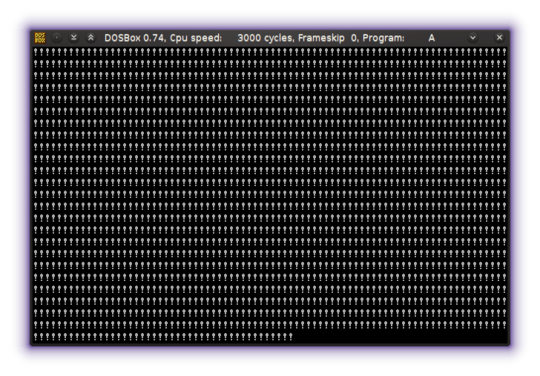
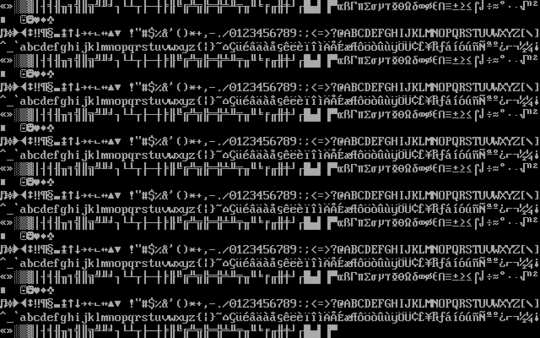

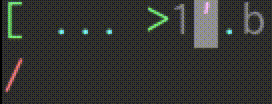
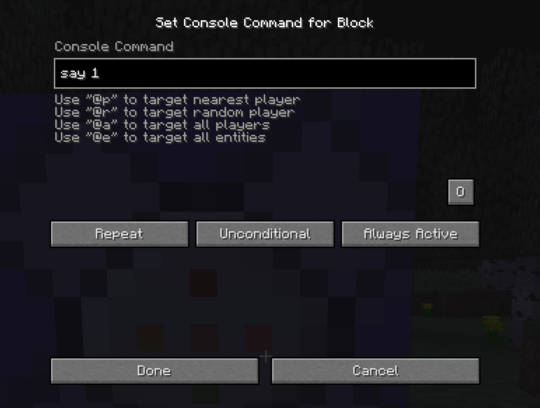
 <== here it is ;)
<== here it is ;)


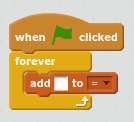

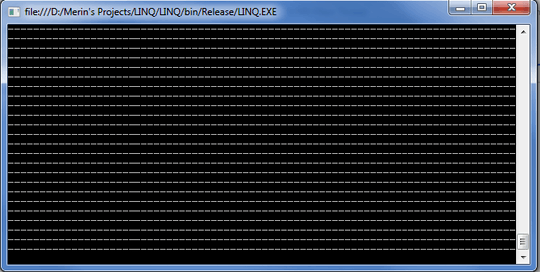
7@Doorknob So really, the challenge is to produce infinite output in a finite amount of time. Sounds easy enough. – Sanchises – 2015-04-10T21:15:31.030
3Perhaps "theoretically infinite" is a better term. – Conor O'Brien – 2015-10-13T02:46:58.553
1I exploited a compile-time behavior specific to GCC to create a temporary file of infinite size. Can it be competing? – user8397947 – 2016-05-29T00:32:55.830
@dorukayhan I would say so. – tbodt – 2016-05-29T00:37:30.367
expression or whole program? – MtnViewMark – 2013-11-09T15:48:55.530
120All answers disqualified because at some point the Earth will be swallowed by the sun, and at some point the universe will die :P – Doorknob – 2013-11-09T20:00:11.597
17Does "infinite until your computer crashes" count? <_< – Izkata – 2013-11-10T01:39:15.130
2@lzkata yes, it does. – tbodt – 2013-11-10T17:08:50.073
5
If I write mine in Piet, can I count the pixels of the text the other programs used? I believe the smallest possible repeating Piet program would be 6 pixels. That beats Befunge if "off" pixels still count.
– DampeS8N – 2013-11-12T20:27:26.8903@DampeS8N In Piet, pixels count as characters. Sorry. – tbodt – 2013-11-13T01:29:02.660
@AJMansfield If your Piet interpreter reads compressed images, then by all means your byte count can be shorter. I think standard Piet interpreters have to read the data as a matrix though, so really the number of bytes is the shortest (by bytes) representation that the interpreter/compiler understands. – HyperNeutrino – 2017-10-12T14:16:27.947
2@Doorknob The consciousness of AC encompassed all of what had once been a Universe and brooded over what was now Chaos. Step by step, it must be done. And AC said, "LET THERE BE LIGHT!" – KSmarts – 2017-10-13T13:48:41.500
I think the question should make it clear whether recursive solutions are allowed or not. Because they will crash at some point. I see some recursive solutions here. – microbian – 2014-01-27T16:31:24.517
1
@microbian That would disciminate languages that does not have any other looping construct. Some implementations of a language can have TCO and I'd say it would be ok if that implementation is mentioned in the answer rather than disqualifying it.
– Sylwester – 2014-01-30T14:14:34.337@tbodt but with a compression scheme optimized for very tiny images, it could end up taking less data than the text. – AJMansfield – 2014-01-31T19:37:22.280
9@Izkata So any answer that crashes your computer is also allowed :D – ɐɔıʇǝɥʇuʎs – 2014-07-11T20:11:35.247